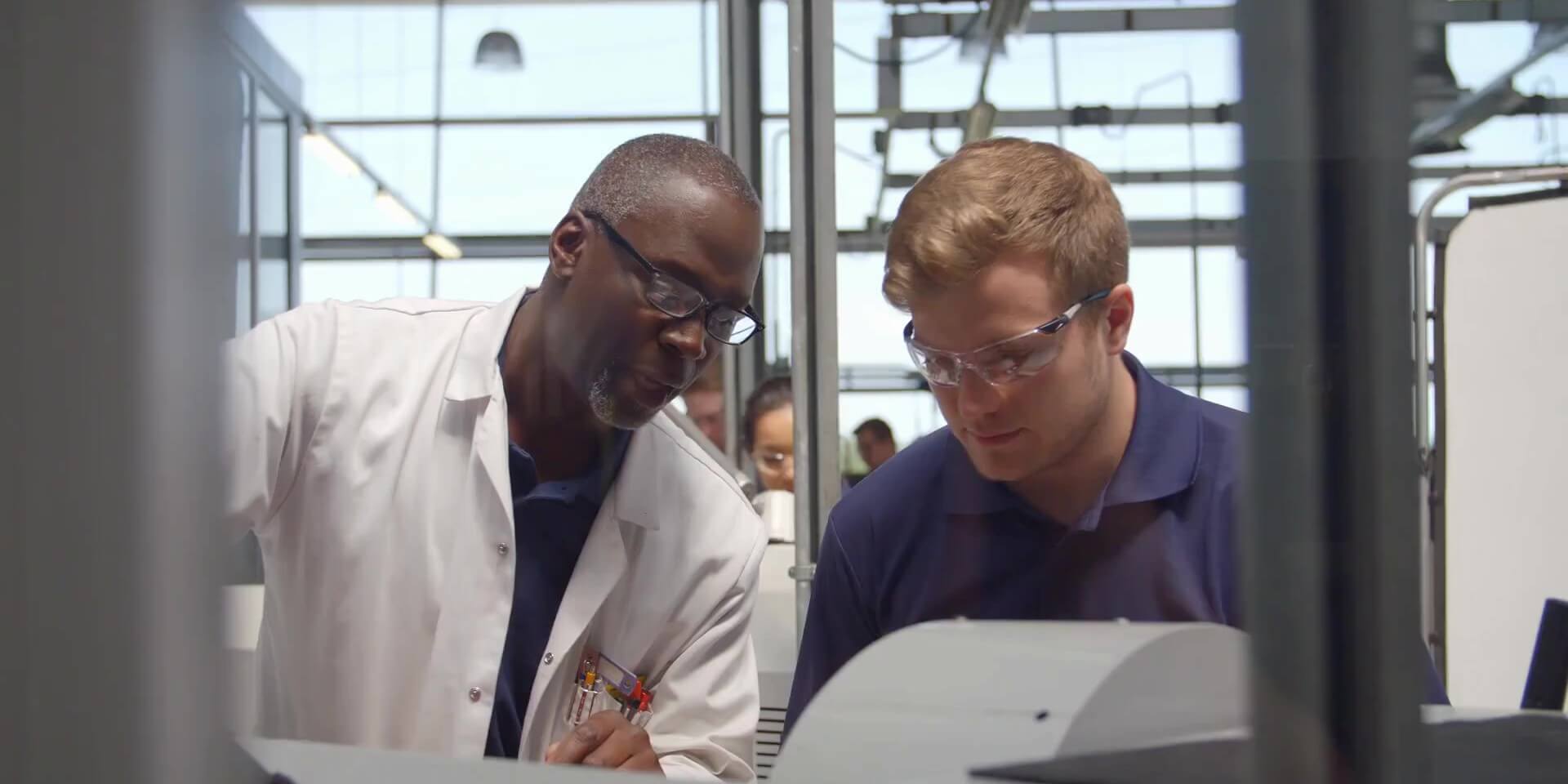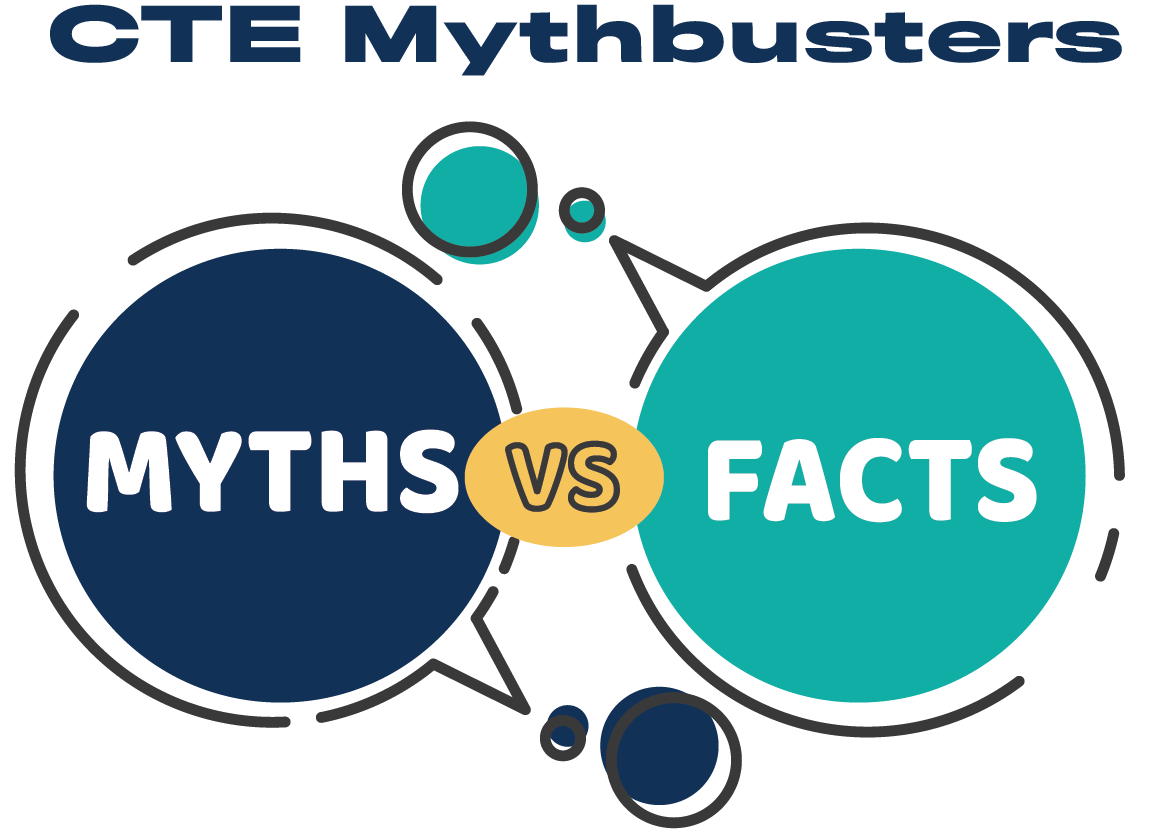Every year, NOCTI invites students to unleash their creativity through a video contest. This year’s theme, “CTE Mythbusters,” is all about challenging misconceptions and highlighting the real benefits, opportunities, and life-changing pathways that career and technical education offers.
In honor of the theme, NOCTI turned to its incredible network of teachers, schools, and credentialing partners to ask” What are the biggest myths about CTE that you encounter?” The responses were as powerful as they were enlightening, with one respondent capturing the essence of the challenge: “It’s crucial to dispel the myths surrounding CTE and showcase its power to transform students’ lives.” Keep reading as we dive into these myths, bust the misconceptions wide open, and celebrate the undeniable impact of CTE.
Myth #1: CTE Is Boring and Unengaging
Myth: CTE programs lack excitement and teach repetitive tasks that don’t require creativity or critical thinking.
Fact: CTE includes dynamic, hands-on learning experiences, internships, and projects that require students to solve complex problems and collaborate.
Today’s CTE programs are exciting environments where students gain the skills needed to thrive in today’s fast-paced, innovative workplaces. To showcase this, one of our credentialing partners, America Makes, shared an inspiring myth-busting success story from Northeast Ohio IMPACT Academy.
Doug Eisenbraun, a dedicated educator at the Academy, combined the America Makes’ microlearning modules with their Additive Edge program to immerse students in the world of additive manufacturing. Through this approach, students not only learned about exciting career opportunities in 3D printing but also tackled real-world challenges.
The America Makes microlearning modules offer quick, 10-minute, bite-sized chunks of information, guiding students step-by-step—from understanding 3D printing and creating designs to troubleshooting and post-processing parts. Additive Edge goes a step further, encouraging students to identify real-world problems, develop innovative solutions using additive manufacturing, and build business models around their solutions. Together, these programs empower students to see the transformative potential of CTE and inspire them to reimagine their future in a rapidly evolving industry.
“In partnering with America Makes, my students had the opportunity to work in collaborative groups to come up with a creative solution to a problem they felt needed to be solved,” said Eisenbraun. “Students worked together to not only create a product but also a business plan for selling their products. At the conclusion of the program, the students pitched their ideas to members of America Makes in a Shark Tank-style presentation. The skills the students were able to build and strengthen through this program are skills that are necessary in the workforce. My students benefited greatly from participating in this Additive Edge program through America Makes.”
Myth #2: CTE Offers Limited Career Options
Myth: CTE programs only offer training for manual labor jobs and don’t provide as many career opportunities as a traditional college path.
Fact: Students who participate in CTE have access to education in diverse fields and opportunities to explore in-demand careers in a variety of industries.
With the growing recognition of CTE’s vital role in workforce development, students today have more options than ever to explore technical education. Steven Sensebaugh, DMA Instructor at Jefferson County Debois AVTS, commented on this myth, saying, “Some think CTE schools only offer training for manual labor jobs. However, they provide education in diverse fields like healthcare, information technology, and business. In addition, many schools continuously update their curriculum to meet industry demands and technological advancements.”
NOCTI has had the honor of working with many innovative programs that provide technical training for in-demand jobs. Recently, NOCTI helped the American Boat & Yacht Council (ABYC) develop an entry-level Marine Service Technician certification for high school programs. Similarly, our partner FANUC, collaborates with over 1,500 high schools, technical training centers, community colleges, and universities to provide hands-on automation training aligned with industry and employer needs.
Melissa Nyce from Upper Bucks County Technical School emphasizes the importance of staying current, saying, “There’s a misconception that CTE schools are not up to date, but many have state-of-the-art equipment that is aligned with today’s industry needs.” She also highlighted the impressive achievements of CTE alumni, many of whom own businesses, hold leadership roles, and are prominent members of their communities. Additionally, former students can give back by becoming NOCTI proctors, Occupational Advisory Committee Members, or presenting to support local workforce development.

Myth #3: CTE Is for Students Who Aren’t “College Material”
Myth: CTE programs are only for students who don’t perform well academically and who plan to enter the workforce after graduation.
Fact: CTE equips all students with valuable skills and knowledge, regardless of their post-secondary plans.
Work-based learning goes beyond teaching technical skills; it helps students develop critical thinking, innovation, and employability skills that prepare them for the next stage of life, whether that’s pursuing higher education or starting a career.
Rodney Copenhaver, an instructor at Arlington ISD Dan Dipert Career and Technical Center, shared the story of a student whose hands-on experience in health sciences shaped her future. Though classes and a practicum shadowing a neurosurgeon specializing in spinal cord repair, she discovered her passion for the field. After earning a bachelor’s degree in organic chemistry from UT Austin, she secured an internship with the Mayo Clinic and is now pursuing a PhD in Chemistry at Northwestern University.
Theodore J. Mackey III, Director of CTE & Steam at Anna ISD, highlighted how their approach to technical education encourages exploration, immersion, and project-based learning (PBL) in real-world contexts. “We’ve intentionally designed our CTE program to cultivate the key attributes outlined in our ‘Portrait of a Graduate,’ which emphasizes adaptability, critical thinking, effective communication, innovative problem-solving, and responsible citizenship,” said Mackey. “We’ve created a dynamic environment where students engage in ‘Design Thinking,’ a non-linear, iterative process where they start with an idea, create a prototype, test, improve, and repeat until a solution is finalized as a team. This hands-on approach has yielded remarkable outcomes, including students discovering hidden talents and making significant career path changes. For instance, one student initially interested in law enforcement discovered a passion for engineering through design and 3D printing. Another, who led our Makerspace sewing club, printed our first 3D-printed fabric. She is now pursuing Fashion Design at the University of North Texas, where she is recognized for her innovative use of 3D-printed textiles.”
Fact: NOCTI Is Your CTE Credentialing Partner
For over 55 years, NOCTI has been at the forefront of developing industry-recognized credentials and resources to support educators in delivering high-quality instruction. We are focused on equipping students with the skills they need to succeed in their chosen fields.
Our latest resource, “The Secret Recipe of Rockstar Teachers,” highlights three researched-backed strategies designed for CTE teachers. Inside, you’ll find:
- Tips for gamifying student progress to encourage engagement
- Strategies for targeting key vocabulary effectively.
- Insights into using data to improve instruction.
Best of all, the guide is available for free here.
The NOCTI website offers additional resources, such as credential Blueprints, CTE-focused blogs, on-demand webinars, and books for CTE teachers and administrators. Let us know if you have questions about our resources or services.
